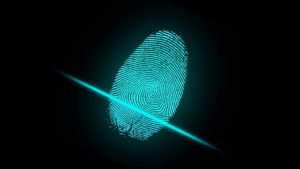
By utilizing the concept of multi-factor authentication, security technologies are able to better protect the users.
Traditionally, we’ve tended to rely on a single means of authenticating identity in security scenarios. Whether that means using a password for an email account or old fashioned lock and key systems, centralizing that kind of power can create a lot of issues. Think about it this way: if you only require one means of authenticating an identity, that means that someone with the wrong intentions only has to get their hands on or replicate that sole form of identity. On the other hand, if you spread that power out across multiple forms of identification (say, a keycard and a fingerprint scan), it becomes much less likely that someone can circumvent your security systems. This simple idea of diversifying your forms of identity is an important security principle that guides the development of new technologies called multi-factor authentication.
How Multi-Factor Authentication is Implemented
You’ve almost certainly engaged with systems centered around multi-factor authentication before, even if you didn’t realize it at the time. In any instance where users are required to supply more than one form of identity authentication, it’s a case of multi-factor authentication being used. If you set up 2-step verification for an email account, for example, where you supply a password but also tap through a prompt on your smartphone, then you’ve already dealt with multi-factor authentication. Many bank services, phone apps, and media services require or at least allow you to set up multiple steps of verification these days. However, multi-factor authentication can be applied to physical security technologies as well.
Why Access Control is a Possible Application
Access control systems are security technologies wherein users are granted or refused access to a particular area based on the presented credentials. A typical system may only require one form of identification: a keycard, a password, a biometrics scan like a fingerprint, or even video badging systems. However, using multiple kinds of access control can create a more secure system by reducing the number of vulnerabilities. Now, if someone were to get their hands on a keycard for example, it may not necessarily be the case that they could acquire the other required forms of identification, leaving them unable to access your facility or restricted area.
Get in Touch with FiberPlus
FiberPlus has been providing data communication solutions for over 25 years in the Mid Atlantic Region for a number of different markets. What began as a cable installation company for Local Area Networks has grown into a leading provider of innovative technology solutions improving the way our customers communicate and keeping them secure. Our solutions now include:
- Structured Cabling (Fiberoptic, Copper and Coax for inside and outside plant networks)
- Electronic Security Systems (Access Control & CCTV Solutions)
- Wireless Access Point installations
- Public Safety DAS – Emergency Call Stations
- Audio/Video Services (Intercoms and Display Monitors)
- Support Services
- Specialty Systems
- Design/Build Services
FiberPlus promises the communities in which we serve that we will continue to expand and evolve as new technology is introduced within the telecommunications industry.
Have any questions? Interested in one of our services? Call FiberPlus today 800-394-3301, email us at info@fiberplusinc.com, or visit our contact page. Our offices are located in the Washington, DC metro area, Richmond, VA, and Columbus, OH. In Pennsylvania, please call Pennsylvania Networks, Inc. at 814-259-3999.
Do you enjoy clicking “Like” and “Follow?” Be sure to click on our official Pinterest, Facebook, Twitter, and LinkedIn pages today!